Nordenburg (Krylovo) - Past and Present
Nordenburg is a medieval town founded by the Teutonic (German) Order in the Bartia region of northern Prussia. Today it is the village of Krylovo on the southern border of the Kaliningrad region.
Even before the arrival of the Teutonic Knights, there were several Prussian villages in these areas, and there was also a pagan cult center of the Prussians [1].
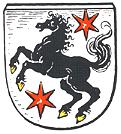
To the north of the future Nordenburg, on a hill that later received the gloomy name of Hexenberg (Witches' Mountain), according to some sources, there was a Prussian settlement [2], and according to others, a pagan temple (this, in particular, may be indicated by the city's coat of arms). On another hill, located on the opposite bank of the Świna River, in 1303 the Teutonic Order built a castle, next to which a settlement arose. In 1366 they were captured and burned by the Lithuanians led by Keistut. Later, between 1370 and 1374, the Supreme Marshal of the Order, Rothcher von Elner, granted land in Nordenburg with an area of 30 gufs (1) to 10 free Prussians on the condition that they perform military service for the Order. In 1405, the Grand Master of the Teutonic Order, Konrad von Jungingen, founded a new city here. The origin of the name "Nordenburg", which means "northern castle" in German, is not entirely clear. It is unlikely that it was given to the city by the Order itself, since at that time it was precisely the southern border of the Order's possessions and, at the same time, the western edge of the so-called Great Wilderness - a huge forest area that extended to the east, the remains of which are now the Romincka and Belovezhskaya Pushchas. Nordenburg received the Kulm city law and coat of arms in 1407 from the next Grand Master, Konrad's younger brother - Ulrich von Jungingen.
Despite the paucity of documents on the history of Nordenburg during the Order's time, a location charter issued by the Order to Nordenburg on July 24, 1407, and materials from the city audit conducted in the Duchy of Prussia in 1691-1693 have reached us. Thanks to these documents, we can describe the economic conditions in which Nordenburg emerged and developed.
The locator (2) and schultheiss (3) of Nordenburg was a certain Nitsche Döring, to whom the order allocated 13 gufs of land from the allotted 130 gufs for personal hereditary use, exempt from quitrent (4), and allowed him to conduct legal cases with the retention of 1/3 of the fines imposed by the court in his favor. Döring and his heirs were also granted the right to have one bread shop and one butcher shop without paying quitrent, and also to have 1/3 of the quitrent collected in the city from all shops, baths, barber shops and beer cellars.
In the city, there were to be 40 courtyards measuring 7 by 4 rods (5) on 63 gufas of land. Residents were given the right to freely catch fish for personal use in the nearby stream and lakes. They were exempt from tax for 7 years, and after this period they had to pay an annual chinsch of 1 firdung (6) from each city courtyard. The townspeople were ordered to use only the city's beer kettles, and were also obliged to assist the order in maintaining the bridges approaching the city borders. The order, in turn, took on the responsibility of protecting the city with a palisade and a castle, as well as covering 1/3 of the costs of building establishments that brought in chinsch. The order reserved the right to use minerals and organize mills. In addition to the 63 gufas of city land, 60 gufas out of a total area of 130 gufas were allocated for the development of the village. The owners of village plots were exempt from tax for 14 years. After this period, the order wanted a quitrent of 14 cattle (7) and 2 chickens from each guf of village land, and a quitrent of 1 quarter (8) of wheat and 1 quarter of rye from each plough. All taxes, as was customary in the order, had to be paid by St. Martin's Day (9).
Almost simultaneously with the Nordenburg location charter, the order issued a charter for the foundation of a Dominican monastery in the city, for the construction of which 50 marks were allocated in April 1407. Apparently, the life of the brethren in Nordenburg was so difficult (in particular, the abbot of the monastery complained to the Grand Master Paul von Rusdorf that due to the small number of residents in the area, the monastery could not provide itself with donations) that in 1428 the monastery was moved to Gerdauen (Zheleznodorozhny) [3].
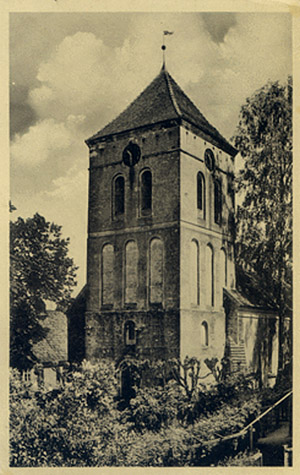
In 1409, construction of the city church began, and it lasted for several decades.
The size of the town of 40 households, as stipulated by the charter of incorporation, was reached in Nordenburg by the end of the 1430s. However, the locator failed to attract settlers to the village lands. As a result, the lands allocated for the village returned to the order, and by 1446 it transferred them as service allotments to two landowners.
From 1469 to 1808, Nordenburg was privately owned by the Prussian branch of the Schlieben family, whose founder, Georg von Schlieben, was the commander of a detachment of mercenaries who served the order during the conflict with the League of Prussian Cities in 1448–1475, and with whom the order paid with lands and the transfer of ownership of the city of Nordenburg and the castle of Gerdauen [4].
If we look at the results of the above-mentioned city audit conducted in the last decade of the 17th century, Nordenburg's situation at that time did not look brilliant. At the time of the audit (February 4, 1692), the city had less than 100 residential buildings (10), some of which were in poor condition. Several dozen plots in the city remained undeveloped [1].
Fate has not been kind to Nordenburg. Throughout its history, the city has experienced many fires, but has been rebuilt anew.
In 1705 the church burned down, and in 1710 more than half of the city's inhabitants died of the plague.
In 1757, during the Seven Years' War, Nordenburg was occupied by Russian troops. In 1831, 1852 and 1857-1858, a cholera epidemic became a real disaster for the inhabitants of Nordenburg.
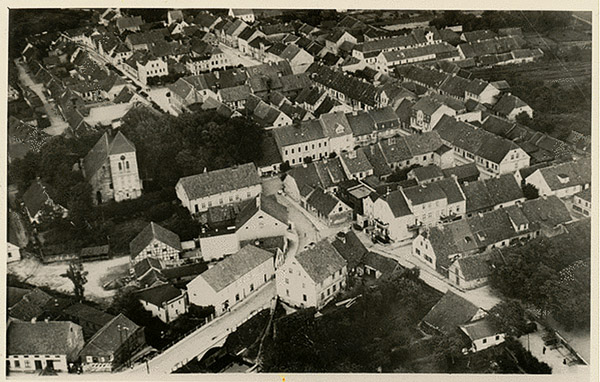
In August 1914, at the beginning of World War I, Nordenburg was captured by Russian troops. Most of the city's population fled.
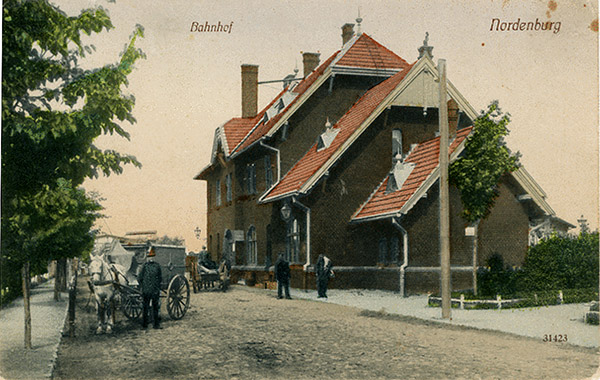
But despite everything, the city grew and developed. In 1939, the city had a population of 3,173, two schools, a post office, and a dairy plant. The Jensen & Hesse steam mill, built in 1905, also served as a power plant, supplying some households in the city with 110 volts, while 220 volts were provided by the power plant in Friedland (Pravdinsk) [5]. The railway connecting Königsberg and Angerburg (Węgorzewo) via Löwenhagen (Komsomolsk) and Gerdauen (1,435 mm gauge) passed through Nordenburg, as well as two narrow-gauge railways (with a gauge of 750 mm): Nordenburg - Insterburg and Nordenburg - Barten (Bartsiany) - Rastenburg (Kętrzyn). In 1938, with funds from the townspeople, the Tingplatz was built and a monument to those who died in the First World War was unveiled.
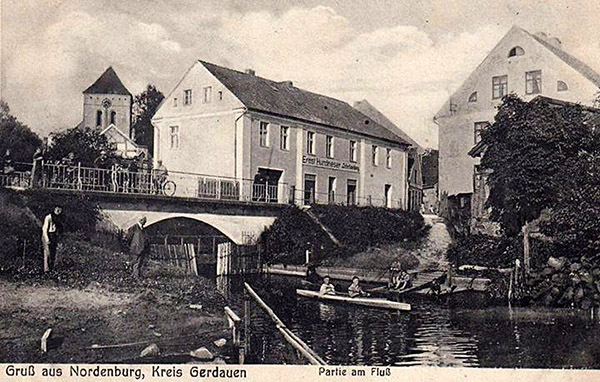
On January 26, 1945, Nordenburg was captured by the Red Army. The city suffered virtually no damage from the fighting.
Immediately after the end of the war, part of the territory of the former East Prussia, which according to the preliminary agreement of the victorious countries was considered Polish, began to be populated by Polish settlers "even before the delimitation and subsequent demarcation of the border." [6]. Thus, since June 1946, Nordenburg had already been populated by Poles and was called Nordenbork (Oswin). In July, one of the steam mills in Nordenburg was registered as Polish property [5].
However, the border issue had not yet been settled at the interstate level at that time, and in September-October 1945, the temporary border between the Soviet Union and Poland began to shift deeper into Polish territory by arbitrary decision of the commanders of individual units of the Red Army. As a result, “the Polish authorities had to urgently evacuate the national administrations created there and the settlers who had arrived there” [5]. In September 1945, the Polish administration and population were forced to leave Nordenburg-Nordenbork within two days.
Immediately after their departure, the old town of Nordenburg was burned down. Historians and local historians are still trying to figure out who did it.
Polish sources claim that it was destroyed during the assault by Soviet troops, while Soviet/Russian and German sources report that Nordenburg was taken by the Red Army without a fight, and the old town was practically undamaged. According to German sources, the old town was set on fire by Polish settlers "presumably out of anger over the correction of the border." But Soviet/Russian sources do not mention anywhere that after the Poles left, the old town was burned down and its remains were then demolished. Why? This is a question for further research. All that remains of the old town is now hidden by thickets of bushes and overgrown forest. Only the (still beautiful!) cobblestone roads of some streets and the cobblestone Marktplatz square have survived. The ruins of the tower of the Evangelical Church of Nordenburg (1710-1726) rise nearby.
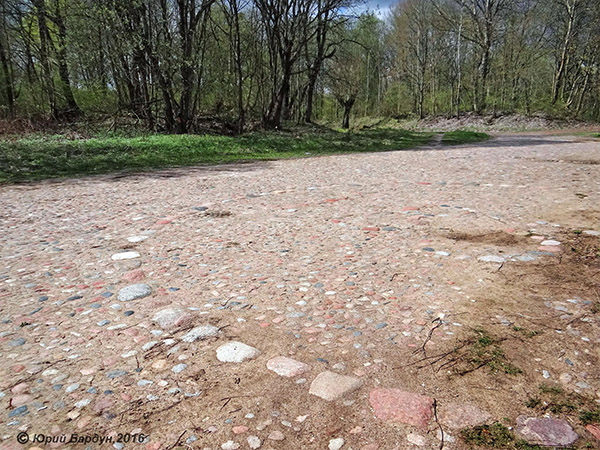
After the departure of the Polish administration, the city was again renamed Nordenburg.
At the end of 1946, a border outpost was deployed here and a military collective farm named after the Red Army was organized. Since 1947, Nordenburg became the center of the collective farm named after V. M. Molotov (renamed in 1957 into the collective farm "On guard").
In January 1947, after the deportation of the German and Polish population, the number of residents of Nordenburg (mostly military) was 137 people, in October 1947 - only 36.
On July 5, 1950, by Decree of the Presidium of the Supreme Soviet of the RSFSR, Nordenburg was renamed the settlement of Krylovo. It is believed that it was named in honor of Colonel General N. I. Krylov, who fought in East Prussia. By this time, the Svina River had also been renamed Putilovka.
Thus ended the history of the city of Nordenburg and began the history of the settlement of Krylovo.
Currently, the settlement of Krylovo is part of the municipal formation "Urban settlement "Zheleznodorozhny". As of January 1, 2011, 831 residents lived in the settlement.
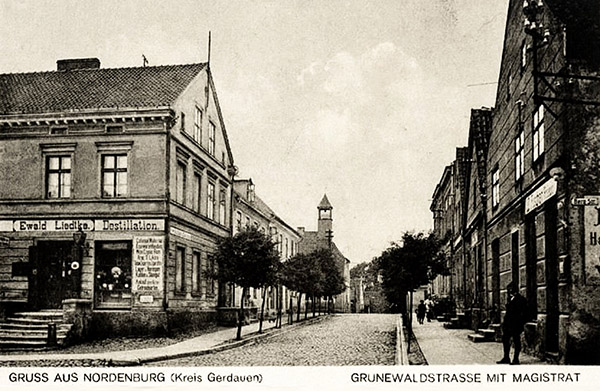
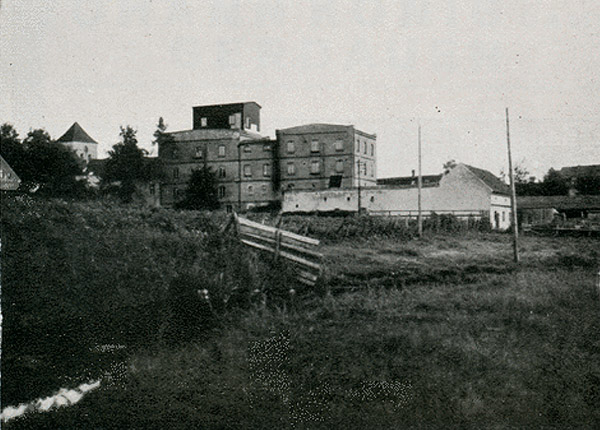
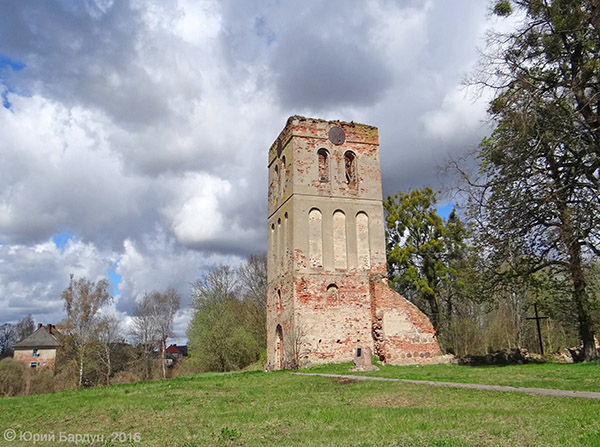
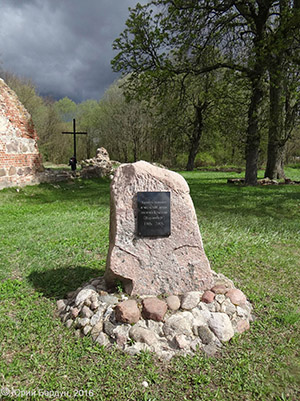
Notes:
Guf (khuf, khuf) is a medieval measure of area, 1 Kulm guf = 16.795 hectares
A locator was an organizer of the colonization of a certain area, who was obliged to populate a plot of land allocated by the owner of the land with a specified number of colonists, and who received for this a larger allotment of land than the other settlers, as well as the position of shultheis. These privileges were then passed on to the descendants of the locator.
Schultheiss (Schulz) is a community elder who has the right to administer justice and to retain part of the monetary fines for his own benefit.
Chinsch (German: Zins - percentage, tax ) is a tax paid by a tenant of land or real estate in favor of its owner under a long-term (often hereditary or even perpetual) lease agreement.
The prut is a Prussian unit of length equal to 4.32 m.
Firdung is a monetary unit equal to 1/4 mark.
Scot (shkot) is a monetary unit equal to 1/24 mark.
A quarter is a quarter of a sheffel, a unit of volume for bulk solids (approx. 55 l), or approximately 13.7 l.
St. Martin's Day is November 11, the feast day of St. Martin of Tours.
Sources and literature:
1. Rogachevsky A.L. Essays on the history of Prussian law in the 13th-17th centuries.
2. Small towns of the Kaliningrad region. Encyclopedic reference book . - Kaliningrad, 2011. Publishing house OOO "Axios".
3. Kubicki R. Dominion in Normandy and the Fifteenth-Century Period. — Masurian-Warsaw communities. Band 2. 2012. S. 227–244
4. Krylowo - Nordenburg newspaper. http://ostpreussen.net/ostpreussen/orte.php?bericht=620 (accessed 15.10.2021).
5. Memories from Prus Wschodnich. Nordenburg – Młyn Jensen. https://prusywschodnie.wordpress.com/2019/12/05/nordenburg-mlyn-jensena/ (accessed 15.10.2021).
6. Kostyashov Yu.V. Repolonization of Warmia and Masuria in the Post-War Years. The Baltic Region in the Modern and Contemporary Times: History and Regional Policy. — Kaliningrad: I. Kant Baltic Federal University Publishing House, 2016.
